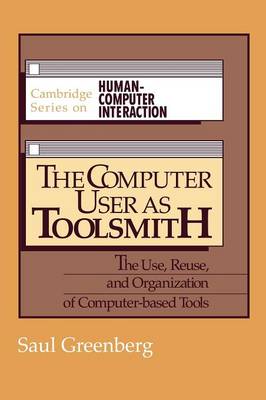Cambridge Series on Human-Computer Interaction
1 total work
Computing environments that furnish a large set of tools (such as editors, mail programs and language processors) are difficult to use, primarily because there is no means of organizing the tools so that they are at hand when needed. Because of the dearth of knowledge of how users behave when issuing commands to general purpose computer systems, user support facilities are ad-hoc designs that do not support natural work habits. The Computer User as Toolsmith, first published in 1993, describes several empirical studies from which the author has developed a computer version of a handyman's workbench that would help users with their online activities. For the practitioner and interface designer, the guidelines and principles offered here are directly applicable to the rational design of new systems and the modernization of old ones. For the researcher and graduate student, the book offers a wealth of analysis and interpretation of data, as well as a survey of research techniques.
